The Economics and Statistics Division maintains archives of previous publications for accountability purposes, but makes no updates to keep these documents current with the latest data revisions from Statistics Canada. As a result, information in older documents may not be accurate. Please exercise caution when referring to older documents. For the latest information and historical data, please contact the individual listed to the right.
<--- Return to Archive
For additional information relating to this article, please contact:
November 30, 2022CENSUS PLACE OF WORK AND COMMUTING, 2021 Statistics Canada has released data on place of work and commuting modes/times from the 2021 Census.
Almost two-thirds of Nova Scotians (65.5%) reported to work in a usual place outside their home; this was above the national average. A further 20.7% of Nova Scotians reported working at home, which was below the national average. There were 13.7% of Nova Scotians who reported to work neither in a usual place of work nor in the home.
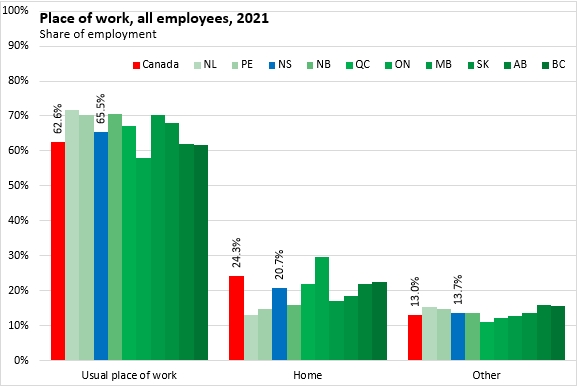
Across Nova Scotia, working from home was notably more prevalent in Halifax (27.7%) while working in neither a usual nor home location was more common in Guysborough, Shelburne and Cape Breton counties.
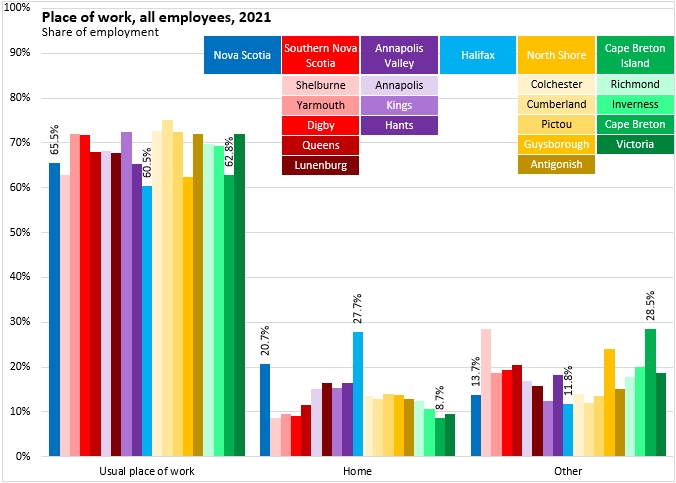
Among industries, working at a usual place of work was most common for those in accommodation/food services, retail sales, manufacturing and health care/social assistance (which includes daycare). Working from home was most common for those in professional/technical services, finance/insurance, company management and information/culture. Agriculture/forestry/fishing, construction, mining/oil/gas and transportation all reported substantial portions of employment reporting neither to a usual place or work nor a home-based location.
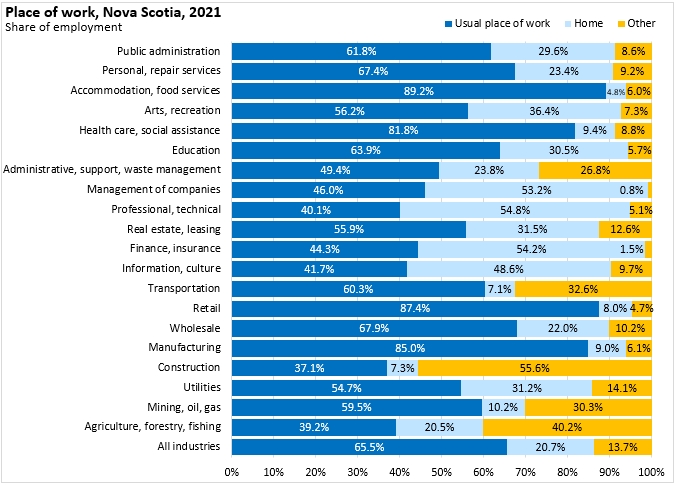
Working from home was more common for those working full-year and full-time while working from neither usual place of work nor home was more common among those who worked part-year and/or part-time.
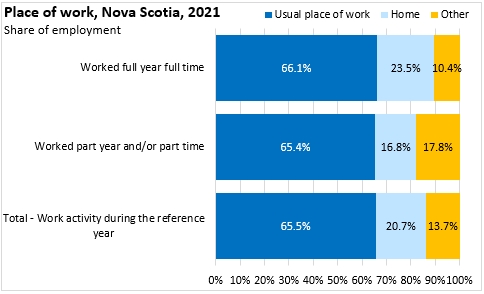
By far, the most common mode of commuting in Nova Scotia (and every province) was a single worker driving themselves in a passenger vehicle with no other workers, accounting for 74.7% of commutes. The next most common commuting modes were passenger vehicles shared between two or more workers (9.1%), active transport (6.1%) and public transit (4.1%).
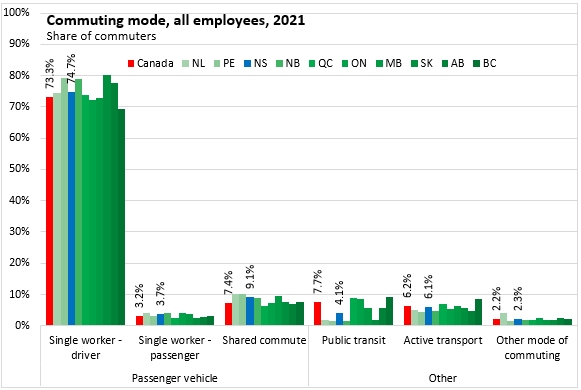
Across Nova Scotia, single worker travel in a passenger vehicle was notably less common in Halifax, which reported the highest shares among counties of commute by public transit and active transport.

In Nova Scotia, the average duration of commute was 20.6 minutes, which was below the national average. Commuting durations were longer for those in larger, more urban provinces (Ontario, British Columbia, Quebec, Alberta) and lower for those provinces with higher rural shares of the population.
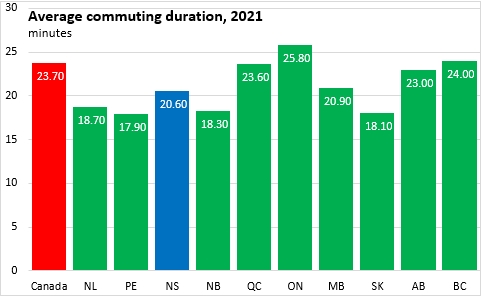
Among counties in Nova Scotia, those in Hants county reported the longest commuting times, followed by those in Guysborough, Richmond and Victoria counties. The shortest commutes to work were reported in Yarmouth, Shelburne and Cape Breton counties.
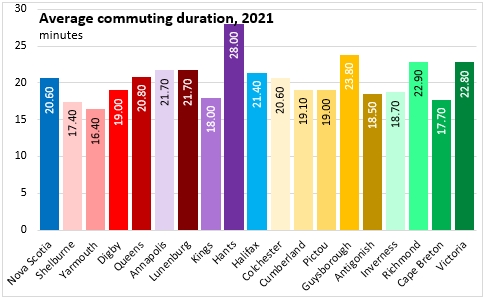
Source: Statistics Canada. Table 98-10-0458-01 Main mode of commuting by commuting duration, time leaving for work, age and gender: Canada, provinces and territories, census divisions and census subdivisions; Table 98-10-0467-01 Place of work status by highest level of education, age and gender: Canada, provinces and territories, census divisions and census subdivisions
<--- Return to Archive